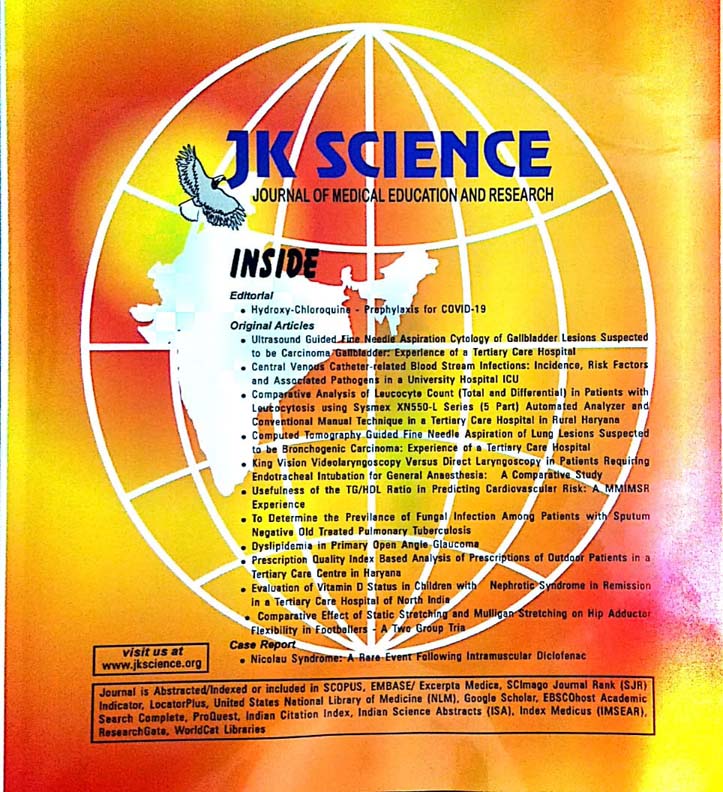Assessment of High-resolution Computed Tomography Thorax Volumetric Indices in Covid-19 Patients and Correlation with Biochemical Markers
Keywords:
COVID-19, HRCT, CT Indices, Bio-chemical Parameters, CRP, D-dimerAbstract
Background: Years after SARS recovery, residual pulmonary abnormalities may still exist. This raises the question of whether or not Covid-19 could have comparable late consequences. Structural changes in the Lungs after recovery can be better visualized using CT-Thorax.
Objectives: To study the Covid CT changes during hospitalization and after four months follow-up of infection, and to correlate with the volumetric HRCT thorax indices and Biochemical parameters.
Material and Methods: This is a hospital based Cross-sectional study, with a follow-up among 100 Hospitalized clinically moderate to severe Covid- 19 patients who recovered after four months.
Results: The biochemical markers such as d-Dimer and C-Reactive Protein (CRP) were significantly reduced. The values of NL (L) and NL (%) had a significant negative correlation with d-Dimer and C-Reactive Protein (CRP). The individuals’ average ages in years, which ranged from 24 to 80, were 48.56 ± 13.87.
Conclusion: Biochemical indicators, including d-Dimer and CRP, were greatly decreased. The NL (L) and NL% values exhibited a strong negative connection with d-Dimer and C-reactive protein (CRP) both during and after Covid. Hence the different CT indices (NL, NL%) can be used along with Biochemical parameters (CRP and d-Dimer) for structural and functional recovery in Covid-19 patients.
Downloads
Downloads
Published
How to Cite
Issue
Section
License
Copyright (c) 2024 JK Science: Journal of Medical Education & Research

This work is licensed under a Creative Commons Attribution-NonCommercial-ShareAlike 4.0 International License.





